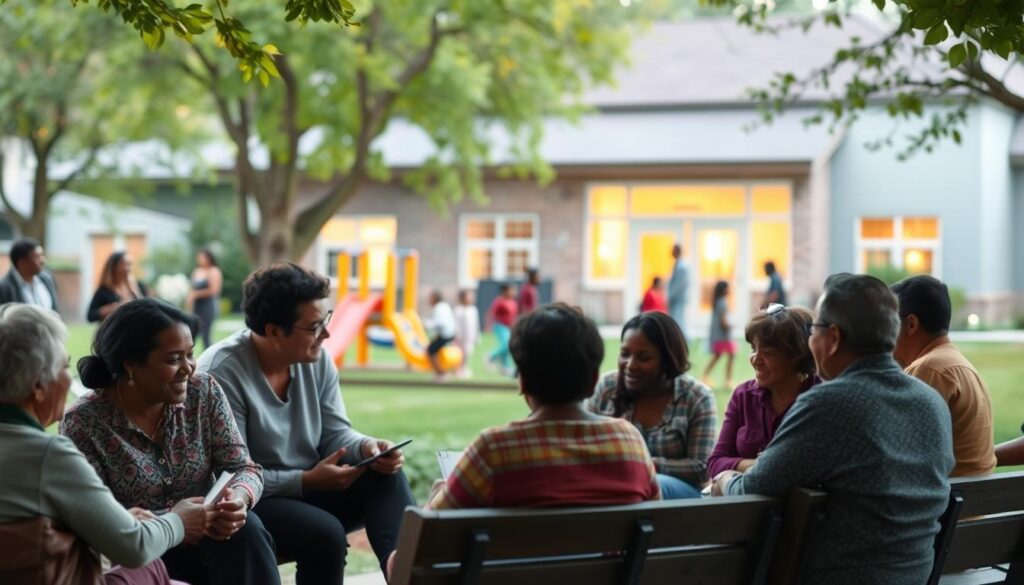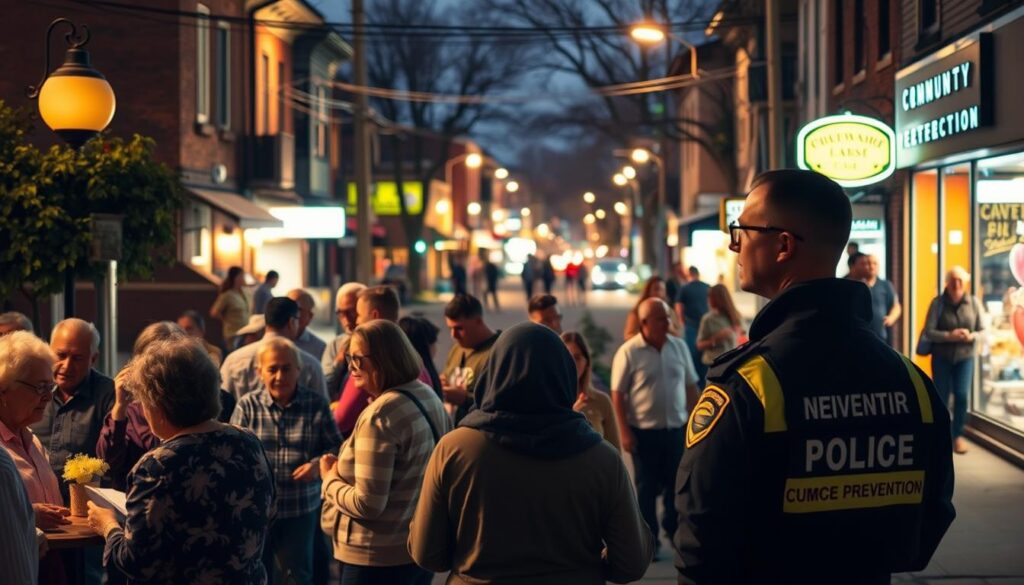Every 14 minutes, an anonymous tip helps solve a case in British Columbia. This startling rhythm of community action underscores how ordinary citizens shape safer neighbourhoods across the province. Whether it’s identifying illegal drug operations or uncovering details about violent incidents, your voice holds power—even when shared secretly.
By choosing to speak up through secure channels, you protect not just yourself but everyone around you. The program ensures absolute confidentiality, allowing you to share critical details without fear of exposure. Over 80% of tips received lead to actionable outcomes, proving that even small contributions create waves.
This initiative thrives on a simple truth: safety grows when neighbours look out for one another. Your input could reveal the missing puzzle piece in investigations—from property thefts to serious assaults. Law enforcement relies on these insights to act swiftly, but they need your help to start the process.
Ready to make a difference? The 24/7 hotline (1-800-222-8477) connects you directly to professionals who prioritize discretion. You hold the key to preventing harm and fostering trust in your area. Together, communities across the province grow stronger—one anonymous call at a time.
Understanding Crime in Canada: Why Reporting Matters
Your voice holds unseen power in shaping the safety of your surroundings. When suspicious events go unreported, they create gaps in law enforcement’s ability to act. By stepping forward, you help close these gaps and build stronger neighbourhoods.

Community Safety and Engagement
Neighbours who share actionable details about unusual behaviour create a shield against harm. Consider these facts:
- Over 60% of resolved cases begin with tips from residents
- Patterns in illegal operations often emerge through multiple reports
- Police prioritize areas where citizens actively communicate concerns
This collaboration allows authorities to address risks before they escalate. Your input directly influences patrol routes, undercover operations, and public safety campaigns.
The Impact of Unreported Criminal Activity
Silence enables repeat offenders. A single unreported theft could signal a larger burglary ring. Unchecked vandalism might evolve into violent confrontations. Every detail matters—even minor observations help connect dots in complex investigations.
When communities stay silent:
- Offenders gain confidence to expand operations
- Resources get diverted from prevention to crisis response
- Residents feel less secure in public spaces
By contrast, consistent reporting creates a culture of accountability. It sends a clear message: illegal actions won’t go unchallenged here.
Crime Stoppers BC Canada: How It Works
Sharing sensitive information requires trust in the system handling your details. This initiative uses layered security measures and legal safeguards to ensure your contribution remains confidential while helping authorities address unlawful acts.
The Anonymous Reporting Process
You start by choosing your preferred method: phone or digital submission. The 24/7 hotline connects you to trained specialists who document details without asking for personal data. Online forms use encrypted channels, stripping metadata that could reveal your location or device.
Three key principles guide every interaction:
- No recording of phone numbers or IP addresses
- Random code generation for follow-up communication
- Data storage in isolated, access-controlled systems
Protecting Your Identity and Privacy
Canadian privacy laws form the backbone of this program’s operations. Legal teams regularly audit procedures to prevent accidental leaks. Your tip never reaches investigators with identifiers attached—it’s filtered through secure databases first.
Exceptions exist only when courts determine information might:
- Protect someone from wrongful conviction
- Stop deliberate attempts to mislead inquiries
- Prevent immediate physical threats
These rare scenarios involve multiple judicial reviews before any disclosure occurs. For everyday reporting, you remain invisible—just a voice helping build safer communities.
Submitting Your Anonymous Tip
Knowing when to act can mean the difference between prevention and crisis. Choosing the right reporting method ensures your information reaches authorities efficiently while protecting your privacy.

When to Call 911 vs. Non-Emergency Lines
Dial 911 only during active emergencies—like witnessing violence or life-threatening situations. Dispatchers prioritize these calls for rapid response teams. For non-urgent matters, such as suspicious activity hours after it occurred, contact your local police department’s general line.
The anonymous hotline (1-800-222-8477) bridges these scenarios. Use it when sharing details about unlawful acts without attaching your identity. This option keeps you invisible while ensuring investigators receive critical leads.
Step-by-Step Guide to Submitting a Tip
Start by gathering key details: locations, descriptions, and timelines. Phone submissions take under five minutes—operators never ask for names. Online forms let you upload photos or documents securely.
After submitting, you’ll receive a unique code. Use it to check your tip’s status or add new information later. No personal data gets stored, making it impossible to trace contributions back to you.
Law enforcement reviews every submission within 24 hours. Your insight could trigger patrol adjustments, surveillance operations, or arrests—all while maintaining complete confidentiality.
What Makes a Good Tip? Detailed Reporting Guidelines
A single detail can unravel complex cases, turning uncertainty into actionable leads. Your ability to share precise observations determines how effectively authorities address unlawful activities. Focus on delivering clear, structured information that answers four critical questions.

Identifying the Who, Where, When, and What
Start by noting distinctive features: nicknames, tattoos, or vehicle models. Physical descriptions become powerful tools—mention hair color, height, or unique clothing. Locations matter too. Share exact addresses or landmarks like “behind the blue warehouse on 5th Avenue“.
Timing transforms vague reports into urgent priorities. Include dates, durations, and patterns (“every Thursday around 8 PM”). Specify the type of activity observed—whether theft, vandalism, or suspicious exchanges. Partial details still hold value if shared promptly.
Providing Specific and Actionable Details
Think like an investigator. Describe license plates, bag colors, or phone conversations overheard. Suspect hangouts—like cafés or parking lots—help track movements. Avoid guessing; stick to verifiable facts.
Never risk personal safety to gather more content. Your tip remains anonymous whether you share three details or thirty. Law enforcement cross-references even minor observations with existing evidence.
Remember: crime stoppers programs prioritize quality over quantity. A thorough account of one incident outweighs vague reports about multiple events. Your contribution could unlock a reward while keeping neighborhoods secure.
Proactive Community Safety and Crime Prevention
Awareness transforms neighbourhoods into safer spaces. When residents understand risks and patterns, they become the first line of defence against unlawful acts. Programs promoting education and resource-sharing empower you to recognize threats early—before they escalate.

Your participation creates a network of watchful eyes. By learning to spot unusual behaviour—like unfamiliar vehicles circling streets or strangers taking photos of properties—you help disrupt potential plans. Shared responsibility strengthens trust and deters those seeking easy targets.
Staying Informed About Local Criminal Activity
Access free materials explaining how to identify suspicious actions. Workshops and online guides teach practical strategies: securing homes, documenting observations, and reporting anonymously. Knowledge lets you act confidently instead of feeling helpless.
Regularly check updates about recent incidents in your area. Notice patterns? Share insights with neighbours through secure channels. This collective vigilance makes it harder for illegal operations to take root. Your awareness directly influences patrol routes and prevention campaigns.
Simple habits create lasting change. Locking gates, installing motion lights, or organizing neighbourhood watches all reduce opportunities for harm. Together, these efforts build resilient communities where safety thrives through cooperation.
Rewards and the Impact of Your Contribution
Your decision to share information anonymously does more than solve cases—it unlocks opportunities to support community safety while earning recognition. The program’s reward system compensates actionable tips that lead to arrests, property recovery, or drug seizures. Financial incentives range from $500 to $10,000, depending on case complexity and societal impact.

| Type of Tip | Outcome | Community Benefit |
|---|---|---|
| Drug Facility Location | Lab Shutdown | Reduced overdose risks |
| Fugitive Sighting | Arrest Made | Prevented repeat offenses |
| Theft Details | Stolen Items Recovered | Restored victim losses |
| Violent Incident Info | Suspect Charged | Increased neighborhood security |
Over 40% of resolved cases involve rewards, proving that civic participation drives real change. Funds come from seized assets—not taxpayer money—making every dollar a direct hit against unlawful activities.
Your input creates ripple effects beyond individual arrests. Closed drug operations disrupt supply chains. Recovered stolen goods help victims rebuild lives. Most importantly, consistent reporting deters repeat offenders and strengthens trust in public spaces.
Since 2020, anonymous tips have contributed to:
- 3,200+ arrests province-wide
- $19 million in recovered property
- 600+ illegal drug facilities dismantled
By choosing to act, you join thousands who’ve transformed neighborhoods through discreet collaboration. The process remains confidential—even reward payments use untraceable methods. Your voice matters, and now it could also earn recognition.
Reviewing Wanted Profiles and Ongoing Cases
Your daily observations could hold missing pieces for active investigations. Law enforcement agencies regularly update public databases with profiles of individuals sought for serious unlawful acts. These listings include precise physical details like height, eye colour, and distinguishing marks—features you might recognize through casual encounters.
Recent Case Examples and Mugshot Details
Consider Courtney Ann Allan, a 33-year-old with auburn hair and blue eyes (File #2023-69377). Or Dustin Jared Lohse, 36, described as 5’10.5″ with brown hair. Such specifics help turn routine sightings into breakthroughs. Profiles often note locations like Central Okanagan, where community familiarity proves invaluable.
Insights from Law Enforcement Agencies
Authorities emphasize that your awareness accelerates resolutions. Updated case files demonstrate how tips identify patterns in illegal activity. One recent arrest followed a neighbour recognizing tattoo details from a wanted poster.
New profiles emerge weekly across the province. By staying informed, you transform ordinary moments into opportunities for justice—all while keeping your involvement completely confidential.

